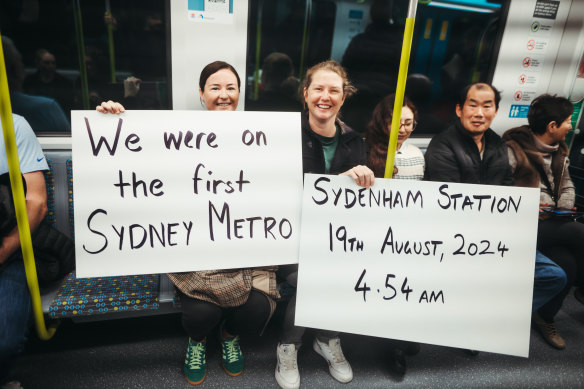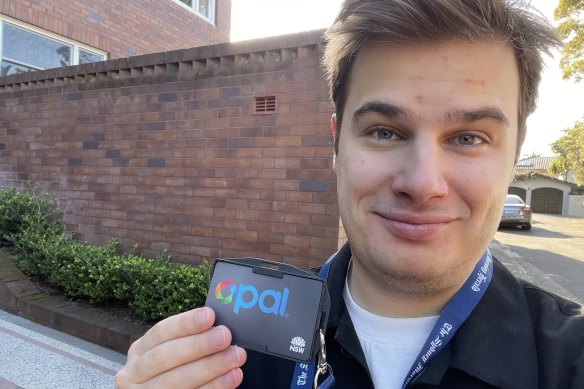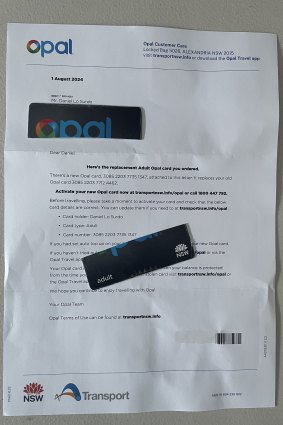This was published 5 months ago
Opinion
Sydney’s metro is world-class. Shame the Opal card isn’t
Daniel Lo Surdo
ReporterSigmund Freud is quoted as saying “out of your vulnerabilities will come your strength”. If that’s true, Sydney’s public transport network has plenty of opportunities to bulk up.
It flexed one of its new muscles last week, when the Sydney Metro – after weeks of delays – opened its gates for the first time. The ultra-quick metro hopes to break down Sydney’s tribal boundaries, and ameliorate the significant emotional distress we’ve experienced from disappearing bus services and train delays over the years.

Passengers on the first regular passenger metro service that left Sydenham at 4.54 am last week.Credit: Dion Georgopoulos
The metro will span four lines and 113 kilometres of track upon its planned 2032 completion date. But if the NSW government wants to truly make the most of its $21 billion investment, it needs to defeat an enemy from within – that rectangular piece of plastic taking up 45.9 square centimetres (yes, I did the maths) in your pocket each commute: the Opal card.
It was first placed into our hands in 2012 – the same year Barack Obama won his second presidential term, the world was introduced to The Avengers, and Gangnam Style was atop the global music charts.
While the world has moved on (especially from Psy, thankfully), Sydney’s transit card has stood still. And to calamitous consequences. Just ask your humble correspondent. I, like the rest of Gen Z, have never needed a physical wallet. All my cards, vouchers, health certificates, even boarding passes and movie tickets, live on my phone. All except that one rectangular piece of plastic, taking up 45.9 square centimetres of real estate in my brain, all day every day.
My first adult Opal lasted for about a year, until I accidentally snapped the card while fiddling with it at Central Station a few months ago. My second was in my possession less than 24 hours, tapping on in the morning and losing it by day’s end. I’ve traditionally buried my card at the bottom of my workbag, which I hurriedly rummage through each morning and afternoon to avoid creating a bottleneck at the Opal readers.

The current, non-digital Opal card feels like a weight around your neck.
Replacing your Opal isn’t an efficient process either, taking five to seven days for a new card to arrive after cancelling your old one. Then it has to be activated, and then it takes a few hours for the thing to be operational. All while I struggle to keep my finances in order.
Of course, I could (and have) still used my digital credit card to tap on and off at the Opal reader. But this hasn’t come without complications either; I’ve mistakenly used different cards when tapping on and tapping off, and (when I was a student) charged adult fares while I qualified for a concession card.
There is a simple solution to this madness: make the Opal card digital. It would remove the panicky scramble each time you spot an Opal gate at the end of the station, put an end to those peak-hour bottlenecks, and save the poor transport support staff from dealing with the same forgetful voice every other month.

No, this is not 1994. It’s 2024!
Making the card digital would also reflect the changing habits of Australian consumers. Reserve Bank analysis found more than one third of Australians were regularly using a mobile device to make in-person payments at the end of 2022, up from about 10 per cent in 2019. Uptake has been highest among younger Australians, though rises were observed among every age group.
The NSW government has been dragging the chain on an Opal upgrade for years. Murmurs of a permanent, digital transit card have circled as part of the planned Opal Next Gen upgrade, but we’re still no closer to knowing if we’ll be able to keep our Opal cards in our digital wallets going forward.
It’s not a fantasy, either. Digital public transport cards exist in Los Angeles, San Francisco, Paris, Hong Kong, and across Japan. If we want to consider Sydney a world city, it’s time we get the card to match.
Global reputation and personal gripes aside, there’s significant risk in failing to adapt to the consumption habits of Sydney’s commuters. Amenity and convenience are key to any successful transport policy, and making public transport easy to use can be the difference between some people taking the train or driving to work.
An old-fashioned Opal card will hamper public transport patronage (at least among those with purely digital wallets like me) while a digital card would, in the words of Freud, make the city stronger.
Daniel Lo Surdo is a reporter at The Sydney Morning Herald.
Get a weekly wrap of views that will challenge, champion and inform your own. Sign up for our Opinion newsletter.